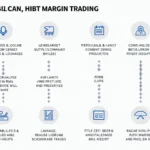Bitcoin Halving Historical Analysis: What Can We Expect Next?
With billions lost to market fluctuations over the past few years, understanding the mechanics behind Bitcoin halving has never been more vital. Historically, these events have shaped the future price, supply, and demand for Bitcoin. In this article, we will explore the historical context of Bitcoin halving and what it means for investors and enthusiasts alike.
The Basics of Bitcoin Halving
Bitcoin halving refers to the process that occurs approximately every four years, or every 210,000 blocks mined. During this process, the reward for mining Bitcoin transactions is cut in half. This built-in mechanism was introduced by Bitcoin’s creator, Satoshi Nakamoto, to control inflation and maintain scarcity.
A Brief History of Bitcoin Halvings
- First Halving (2012): The first halving occurred on November 28, 2012, reducing the block reward from 50 BTC to 25 BTC. This event is widely credited with triggering the Bitcoin bull market of late 2013.
- Second Halving (2016): The second halving took place on July 9, 2016, reducing the reward further to 12.5 BTC. In the following year, Bitcoin reached an all-time high near $20,000.
- Third Halving (2020): On May 11, 2020, the reward was slashed to 6.25 BTC. This halving also preceded significant price increases in 2021, culminating in Bitcoin hitting $64,000.
The Economic Impact of Halving Events
Understanding the economic implications of Bitcoin halving is pivotal for future market predictions. Like any scarce commodity, the laws of supply and demand heavily influence Bitcoin’s price. As the reward for miners decreases, so does the rate of new Bitcoin entering circulation.

Supply and Demand Dynamics
Historically, halving events have led to a scarcity effect, which tends to push prices higher.
- Post-Halving Price Surges: Each halving has been followed by a bull market, often attributed to the reduced supply.
- Market Sentiment: Speculation and market sentiment often see an uptick as investors anticipate price increases, contributing to demand surge.
Analyzing Past Performance: What Can We Learn?
Looking at past price trends, we can gather valuable insights into potential outcomes of forthcoming halvings.
Price Trends Following Previous Halvings
| Halving Date | Post-Halving Year-End Price |
|---|---|
| 2012 | $13.5 |
| 2016 | $963 |
| 2020 | $29,000 |
Data Source: CoinMarketCap
The Upcoming 2024 Halving: Expectations and Predictions
The next Bitcoin halving is scheduled for sometime in 2024. As with previous halvings, it is vital to consider how various factors could influence the market.
Market Predictions
- Increased Institutional Investment: As institutional adoption continues to rise, we may see unprecedented demand.
- Global Economic Conditions: Economic cycles and regulatory changes, especially in Vietnam, could impact local user growth and investment behaviors.
Impact on Vietnam’s Cryptocurrency Market
Understanding local market dynamics is equally essential, especially regarding user adoption rates in Vietnam, where crypto interest has surged.
Growth Rate in Vietnam
According to recent data, Vietnam’s cryptocurrency user base has grown by over 350% in just the past year, highlighting increasing interest and potential investment avenues.
Local Regulations and Market Sentiment
Institutions are progressively looking towards Vietnam as a burgeoning crypto hub, influenced by government regulations. The local phrase “tiêu chuẩn an ninh blockchain” (







